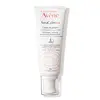What's inside
What's inside
 Key Ingredients
Key Ingredients

 Benefits
Benefits

 Concerns
Concerns

 Ingredients Side-by-side
Ingredients Side-by-side

Water
Skin ConditioningGlycerin
HumectantParaffinum Liquidum
EmollientCetearyl Alcohol
EmollientOenothera Biennis Oil
EmollientCaprylic/Capric Triglyceride
MaskingCetearyl Glucoside
EmulsifyingAquaphilus Dolomiae Extract
Skin ConditioningArginine
MaskingCarbomer
Emulsion StabilisingEvening Primrose Oil/Palm Oil Aminopropanediol Esters
Skin ConditioningGlycine
BufferingSodium Hydroxide
BufferingTocopherol
AntioxidantWater
Skin ConditioningGlycerin
HumectantButyrospermum Parkii Butter
Skin ConditioningOctyldodecanol
EmollientCaprylic/Capric Triglyceride
MaskingVitis Vinifera Seed Oil
EmollientBehenyl Alcohol
EmollientDistarch Phosphate
AbsorbentGlyceryl Stearate Se
EmulsifyingOenothera Biennis Oil
EmollientGlycyrrhiza Inflata Root Extract
Skin ConditioningCeramide NP
Skin ConditioningTocopherol
AntioxidantSodium PCA
HumectantGlycine
BufferingArginine Hcl
Skin ConditioningDecylene Glycol
Skin ConditioningPolyglyceryl-3 Methylglucose Distearate
EmulsifyingCarbomer
Emulsion StabilisingCitric Acid
BufferingEthylhexylglycerin
Skin ConditioningSodium Cetearyl Sulfate
CleansingCaprylyl Glycol
EmollientSodium Hydroxide
BufferingAscorbyl Palmitate
AntioxidantTrisodium EDTA
Phenoxyethanol
PreservativeSodium Benzoate
MaskingWater, Glycerin, Butyrospermum Parkii Butter, Octyldodecanol, Caprylic/Capric Triglyceride, Vitis Vinifera Seed Oil, Behenyl Alcohol, Distarch Phosphate, Glyceryl Stearate Se, Oenothera Biennis Oil, Glycyrrhiza Inflata Root Extract, Ceramide NP, Tocopherol, Sodium PCA, Glycine, Arginine Hcl, Decylene Glycol, Polyglyceryl-3 Methylglucose Distearate, Carbomer, Citric Acid, Ethylhexylglycerin, Sodium Cetearyl Sulfate, Caprylyl Glycol, Sodium Hydroxide, Ascorbyl Palmitate, Trisodium EDTA, Phenoxyethanol, Sodium Benzoate
 Reviews
Reviews

Ingredients Explained
These ingredients are found in both products.
Ingredients higher up in an ingredient list are typically present in a larger amount.
This ingredient is an emollient, solvent, and texture enhancer. It is considered a skin-softener by helping the skin prevent moisture loss.
It helps thicken a product's formula and makes it easier to spread by dissolving clumping compounds.
Caprylic Triglyceride is made by combining glycerin with coconut oil, forming a clear liquid.
While there is an assumption Caprylic Triglyceride can clog pores due to it being derived from coconut oil, there is no research supporting this.
Learn more about Caprylic/Capric TriglycerideCarbomer is a polymer of acrylic acid. Its main role is to create a gel consistency.
A high amount of carbomer can cause pilling or balling up of products. Don't worry, most products contain 1% or less of carbomer.
Glycerin is already naturally found in your skin. It helps moisturize and protect your skin.
A study from 2016 found glycerin to be more effective as a humectant than AHAs and hyaluronic acid.
As a humectant, it helps the skin stay hydrated by pulling moisture to your skin. The low molecular weight of glycerin allows it to pull moisture into the deeper layers of your skin.
Hydrated skin improves your skin barrier; Your skin barrier helps protect against irritants and bacteria.
Glycerin has also been found to have antimicrobial and antiviral properties. Due to these properties, glycerin is often used in wound and burn treatments.
In cosmetics, glycerin is usually derived from plants such as soybean or palm. However, it can also be sourced from animals, such as tallow or animal fat.
This ingredient is organic, colorless, odorless, and non-toxic.
Glycerin is the name for this ingredient in American English. British English uses Glycerol/Glycerine.
Learn more about GlycerinThis ingredient is an amino acid that helps build proteins and moisturizes skin. It is already present in our skin as our bodies produce them naturally.
Glycine already plays a role in helping keep our skin moisturized as amino acids transport moisture throughout our skin.
As collagen is made up of glycine and other amino acids, it is believed glycine may help our skin produce more collagen.
Learn more about GlycineOenothera Biennis Oil is the fixed oil derived from the seeds of the Evening Primrose.
Evening primrose oil is rich in fatty acids. These fatty acids include linoleic (60-85%), oleic (5-12%), palmitic (4-10%), and stearic (2-4%).
The fatty acid composition makes it a great ingredient for soothing and moisturizing skin. However, it may not be Malassezia folliculitis, or fungal acne safe.
Further research is needed on the role of evening primrose in treating eczema.
Evening primrose is native to North America.
Learn more about Oenothera Biennis OilSodium Hydroxide is also known as lye or caustic soda. It is used to adjust the pH of products; many ingredients require a specific pH to be effective.
In small amounts, sodium hydroxide is considered safe to use. However, large amounts may cause chemical burns due to its high alkaline.
Your skin has a natural pH and acid mantle. This acid mantle helps prevent harmful bacteria from breaking through. The acid mantle also helps keep your skin hydrated.
"Alkaline" refers to a high pH level. A low pH level would be considered acidic.
Learn more about Sodium HydroxideTocopherol (also known as Vitamin E) is a common antioxidant used to help protect the skin from free-radicals and strengthen the skin barrier. It's also fat soluble - this means our skin is great at absorbing it.
Vitamin E also helps keep your natural skin lipids healthy. Your lipid skin barrier naturally consists of lipids, ceramides, and fatty acids. Vitamin E offers extra protection for your skin’s lipid barrier, keeping your skin healthy and nourished.
Another benefit is a bit of UV protection. Vitamin E helps reduce the damage caused by UVB rays. (It should not replace your sunscreen). Combining it with Vitamin C can decrease sunburned cells and hyperpigmentation after UV exposure.
You might have noticed Vitamin E + C often paired together. This is because it is great at stabilizing Vitamin C. Using the two together helps increase the effectiveness of both ingredients.
There are often claims that Vitamin E can reduce/prevent scarring, but these claims haven't been confirmed by scientific research.
Learn more about TocopherolWater. It's the most common cosmetic ingredient of all. You'll usually see it at the top of ingredient lists, meaning that it makes up the largest part of the product.
So why is it so popular? Water most often acts as a solvent - this means that it helps dissolve other ingredients into the formulation.
You'll also recognize water as that liquid we all need to stay alive. If you see this, drink a glass of water. Stay hydrated!
Learn more about Water